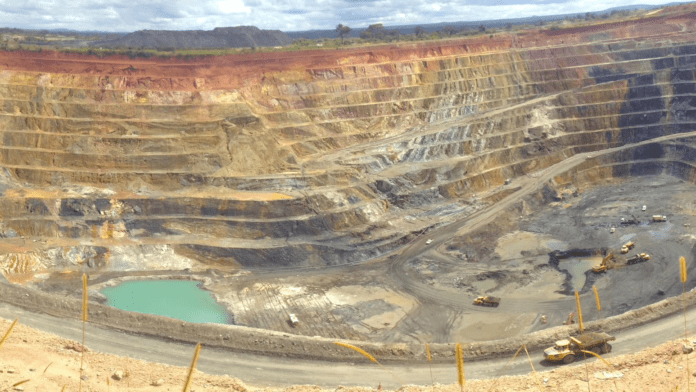In the Ituri province of the Democratic Republic of Congo (DRC), an environmental disaster is unfolding in the Okapi Wildlife Reserve, a UNESCO World Heritage site known for hosting some of Earth’s rarest species.
This biodiversity haven is being devastated by Chinese mining activities, led by Kimia Mining Investment, which have bypassed both international conservation protocols and Congolese law.
The mining operations, located along the Ituri River, have transformed a once-lush forest into an industrial complex with heavy machinery, processing facilities, and worker housing.
The reserve, which shelters endangered species such as the okapi, has become a symbol of unchecked resource exploitation in Africa, even in areas designated as protected.
The destructive mining activities were enabled by a controversial redrawing of the reserve’s boundaries. Originally, the Okapi Wildlife Reserve prohibited mining, but under “opaque circumstances,” these boundaries were altered, allegedly legitimizing Kimia Mining’s activities.
While company officials claim adherence to official maps, Congo’s conservation body, the ICCN, insists that the original boundaries remain legally binding.
Beyond deforestation, the environmental destruction is worsened by harmful mining practices. Former Kimia Mining employees have revealed the use of mercury in gold extraction, which has contaminated local water sources and soil.
The abandoned mining pits pose significant hazards to wildlife and nearby communities, while farmers report plummeting crop yields due to poisoned soil.
The reserve, home to 15% of the world’s 30,000 remaining okapi, is also grappling with a surge in poaching. Local hunters, who once relied on the reserve for sustainable hunting, now face dwindling wildlife populations.
Between January and May 2025, over 480 hectares of forest—an area equivalent to 900 American football fields—were lost in the reserve. This destruction not only threatens biodiversity but also the global climate, as the Congo Basin rainforest serves as the planet’s second-largest carbon sink.
The devastation in the Okapi Wildlife Reserve reflects a broader pattern of Chinese resource exploitation across the DRC. In South Kivu Province, authorities arrested 17 Chinese nationals for illegal gold mining operations that lacked proper documentation or environmental safeguards. These unauthorized activities are intensifying the ecological and social crises in affected regions.
The human impact is profound. Local communities, once reliant on traditional mining and agriculture, have seen their livelihoods collapse. Kimia Mining charges exorbitant fees for locals to mine leftover materials, pushing many into poverty.
This situation mirrors the DRC’s controversial 2008 Sicomines deal with China, which promised $6 billion in infrastructure development in exchange for mining rights. However, the infrastructure investment has fallen far short of expectations, while Chinese companies have gained control of the country’s richest cobalt and copper sites.
Despite claims of adhering to environmental standards, Kimia Mining’s operations tell a different story. A company spokesperson’s remark that Congo “can’t place a higher value on the environment than on mining” underscores the lack of commitment to environmental protection.
The Okapi Wildlife Reserve stands as a stark example of the cost of resource exploitation, threatening not only local biodiversity and communities but also global environmental stability. The world watches as the DRC, rich in natural heritage, grapples with balancing economic development and conservation.







